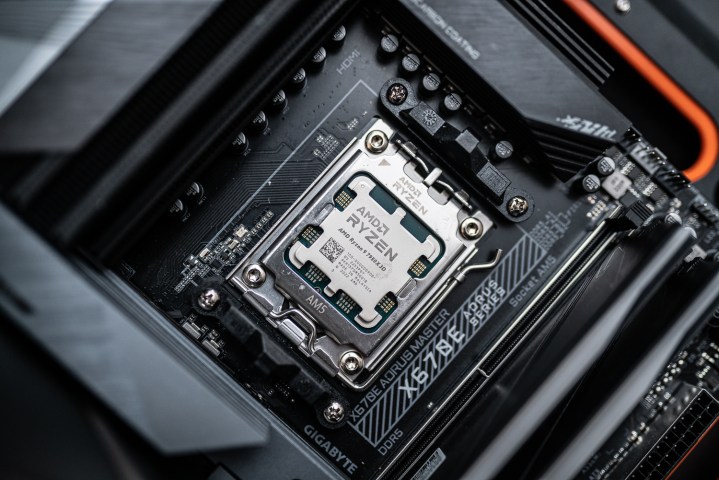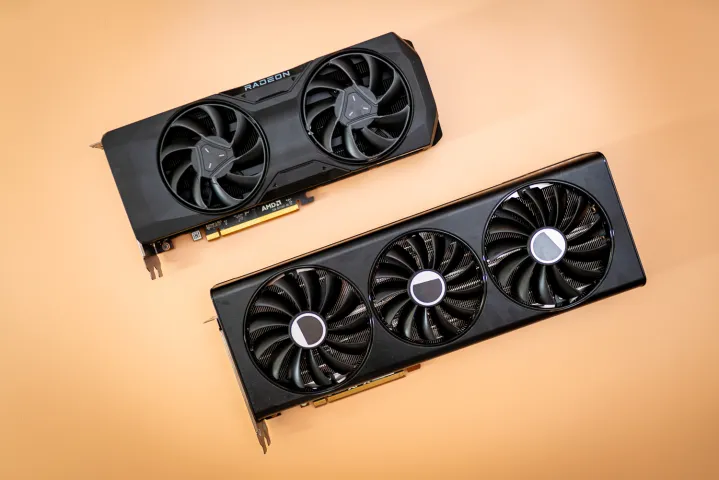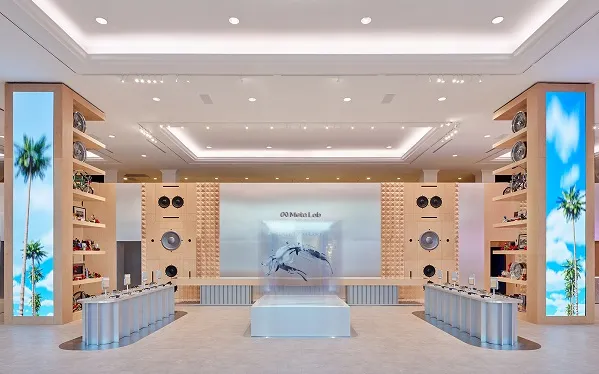I built the best gaming PC in the world — and it wasn’t worth it
I upgraded my PC with some of the fastest components in the world and it's made my work much faster, but it barely effected my gaming at all. Here's why.

 Bonus points if you spot the LED gloved-hand reflection. Jon Martindale / DigitalTrends
Bonus points if you spot the LED gloved-hand reflection. Jon Martindale / DigitalTrendsI love PC hardware. I’ve been researching it, building it, tweaking it, and writing about it for 20 years and I still get just as excited by the latest generation of CPUs as I did when I put together my first PC in my teens.
But as well-read and experienced as I like to think I am, even I can fall foul of the FOMO (fear of missing out). I might write guides on how to maximize your budget, but it turns out I’m not the best at following my own advice. I built one of the fastest gaming PCs in the world — and if I’m being honest — it was (almost) a complete waste of time.
The upgrade
 Hell Let Loose is a good looking game, but it’s no benchmark for graphical performance. Team17
Hell Let Loose is a good looking game, but it’s no benchmark for graphical performance. Team17I operate a couple of computers in my work-from-home office. I have a main desktop PC for the majority of my writing and gaming, and a secondary test bench made up of rotating hardware depending on what I’m working on. Until recently, the main PC was made up of a collection of Frankenstein upgrades over the years. What began life as a Ryzen 2600 CPU, 16GB of DDR4, an ASRock B450M motherboard, and a Radeon Fury X graphics card, had evolved into a 5700X, a 3070 Ti, a couple of extra NVMe SSDs, and double the memory,
It was a perfectly respectable gaming system that could play just about everything I wanted without much difficulty. But it was still starting to show its age.
You know when a Windows install gets old? The random slowdowns, stutters, and need to consistently restart rather than just leave it sleeping for days at a time. My work was suffering and my ping was occasionally going through the roof for no-obviously-discernible reason. It was time for a fresh start, not just another upgrade.
If this was a decade ago, I’d have spent a few days formatting my main drive and painstakingly reinstalling everything, manually copying over the old files and folders. I’m so paranoid that I’ll bring over the errors that caused me to need a fresh start in the first place, I don’t think I could ever clone my boot drive, or just factory reset it, as easy as that is.
But it’s not 10 years ago. Today I’m a busy dad and professional tech journalist, so instead I just bought a new drive and used my old one as a game/app drive. That’s efficient, right? I’ve done that enough times now that my drive collection could help teach my kids the alphabet.
 Jacob Roach / Digital Trends
Jacob Roach / Digital TrendsI also took advantage of my collection of dust-collecting ex-test hardware to build something truly monstrous. Because it’s there, so why not? Right? I’m always writing about 4090s and 16+ core CPUs, why shouldn’t I take advantage of this stuff to really boost my game and work life?
I ultimately settled on a Ryzen 7950X3D, 32GB of DDR5, a 2TB Samsung 980 Pro, an Asus ROG Crosshair X670E motherboard, and an RX 7900 XTX. I could have thrown a 4090 in there for prestige, but an all-AMD system sounded fun and I’ve written enough about the ridiculousness of the RTX 4090’s size and power requirements that I figured I’d stick to my principles this time. I upgraded to Windows 11 too because that made the most sense, as much as I did mourn my left-aligned Start button.
This kind of system gives me lots of upgrade potential in the future and should ensure that there’s nothing this PC can’t handle.
And I was right. It’s an absolute monster. The problem was that I just didn’t have much to throw at it.
It didn’t make any difference … to my gaming
 Something tells me NORCO won’t benefit much from the 7900 XTX. Raw Fury
Something tells me NORCO won’t benefit much from the 7900 XTX. Raw FuryBooting up for that first time after running all the Windows 11 updates, installing all the drivers, and upgrading the firmware enough to feel safe that my ROG board wouldn’t cook my processor, it was all very exciting. The system booted much faster than the old one and everything was shiny, fresh, responsive, and so clearly not bogged down by years of software, driver, and hardware updates. It was great.
And then I played some games, and it felt exactly the same as the old PC.
I’m not quite sure what I was expecting. I don’t tend to play big, demanding games very often. My mainstays at the time of writing are Hell Let Loose, NORCO, and Battle Brothers. HLL is the most demanding of those, but even that’s pretty lightweight by modern standards. Maybe the frame rates were higher? They probably were, but that’s how little impact it had. I just didn’t feel much of anything.
I can, of course, go out of my way to find a benefit if I want to. I can load up the Hogwarts Legacy save that my wife and I are slowly exploring through and enjoy higher frame rates at the max 1440p of my current monitor. Maybe I’ll turn on ray tracing? Probably not. Or I could boot up one of the many test bench games and apps I use when I’m reviewing hardware. But I don’t really want to play them just because I built a new PC. Playing them at a higher resolution doesn’t suddenly make them more my sort of game, or more fun to play.
I just don’t really play the kinds of games that need this sort of hardware at the moment. Frankly, does anyone? I don’t mean that nobody plays AAA games at demanding settings, but PC gaming is in itself a gaming niche. Playing at high resolutions like 4K is even more so. Playing at those sorts of settings and high frame rates is a truly luxurious experience only reserved for those with the money or profession that gives them access to that sort of hardware.
I want to have the best and fastest PC possible. But I really don’t need it.
And I’m super lucky to be able to enjoy that experience. It’s just not one that I’m that bothered about having, now that I do. I’m the dog that caught the gaming car.
The chase is fun, though. I spend most of my days reading about, writing about, and playing around with some of the fastest gaming hardware the world has ever seen. But I get jealous. I don’t just want the best of the best at work, I want the best of the best in my PC, too. I want to have the best and fastest computer possible because that’s my thing. I’m the computer guy.
But I really, really don’t need it. I love how fast my PC is for work now, and it gives me some peace of mind knowing that I can play anything I want without compromise for the next couple of years. I could even look to upgrade to an ultrawide 4K monitor at some point without needing to upgrade anything else.
But when it comes to my gaming habits today, days after the upgrade? There’s not much to call home about.
It’s all in the cloud anyway
So yeah, I don’t play the sorts of games to really take advantage of this sort of hardware. That’s clear. But it’s not just games though. There was also something about the whole upgrade process that highlighted how much less important it is to have this kind of system today.
A lot of what I do really doesn’t benefit from having faster local hardware. I use Google’s services for a lot of my writing, and the rest are handled within the confines of a custom CMS that does a lot of the heavy lifting for me. I use Steam’s cloud saves, so all my usual manual backup obsessions aren’t really needed anymore. I use ChatGPT to help me with some work — and answer random alternate history questions — but that’s all down to OpenAI’s servers, and even Photoshop’s latest amazing features all run in the cloud.
My wife spent a year playing Valheim with me on a 2018 HP Spectre x360 using GeForce Now. She’s since upgraded to a proper gaming laptop, but beyond a better display and the ability to play games that Nvidia hasn’t adopted, the most dramatic change is the extreme fan noise we now have to deal with.
Upgrading has to be worth it to you
 Jacob Roach / Digital Trends
Jacob Roach / Digital TrendsPCs are a lot of fun. I think I’ll always enjoy figuring them out, overclocking them, trying different combinations of hardware, and coming up with ways to truly maximize a tight budget to build something special. But I’m going to try to learn from this, that when it comes to upgrading my own hardware, I need to focus on what I actually need.
In this instance, I didn’t waste much money because I was lucky enough to have much of the hardware lying around already. But I could have. I appreciate the extreme privilege of my situation here, and this may be drifting into the realm of telling gamers to eat cake instead of upgrading their PC, but I think it’s a point worth making nonetheless.
Upgrading your PC should have a purpose. A game you want to play that you can’t right now. Improving your work-life balance with a faster CPU churning through tasks more quickly. Making yourself a more competitive gamer (even if it doesn’t always help). Don’t just upgrade because it’s about that time, or because you’re excited by some new hardware. If you don’t have a reason for it, you won’t notice much of an effect.
If you love it, like I do, ignore me and keep doing what you do. But just make sure you’re making the most of your investments. Your time and money are worth it.

 ValVades
ValVades 
































